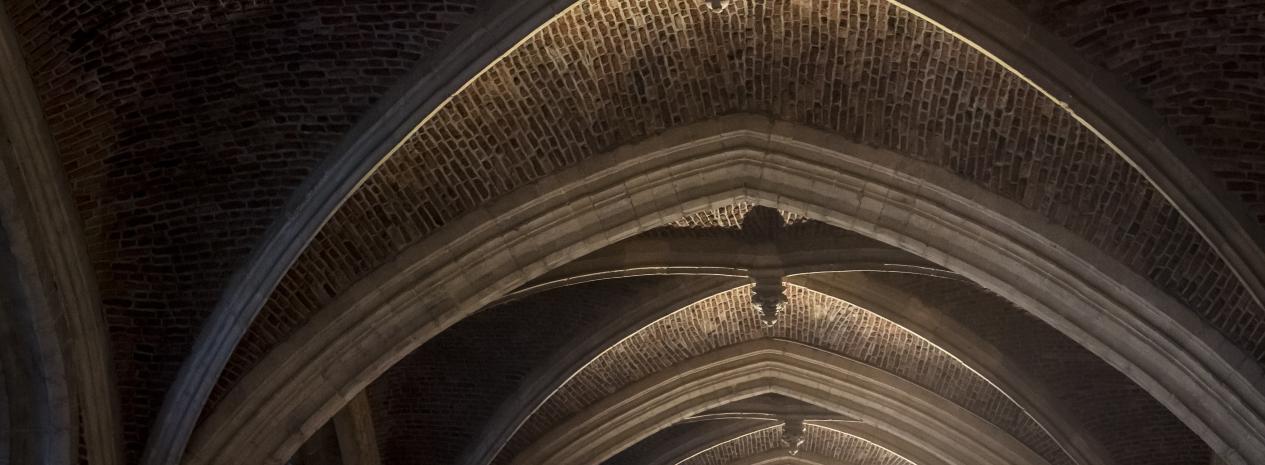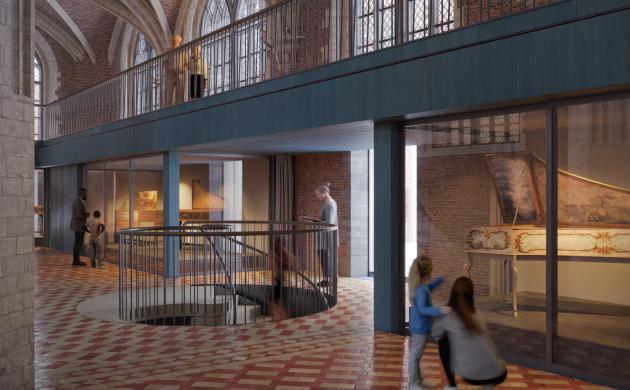1504: New Guild House
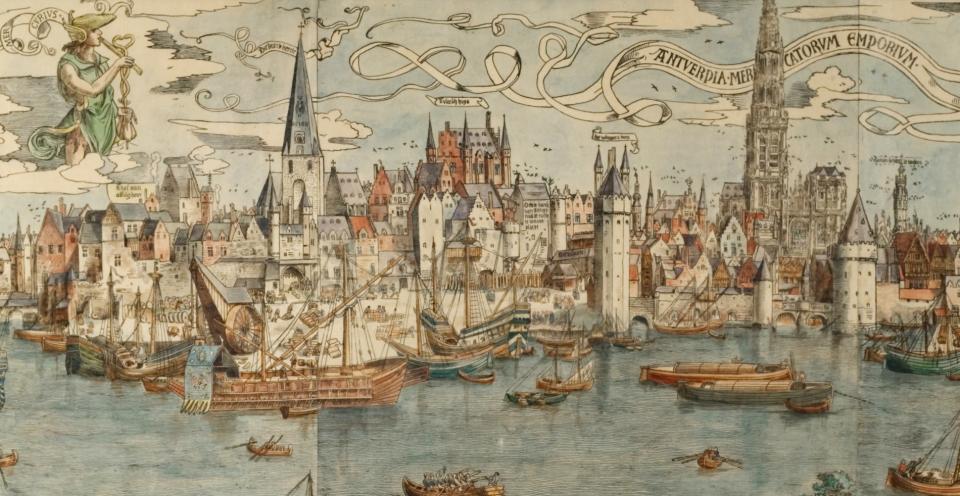
Antverpia mercatorum emporium (detail), vroege 16de eeuw, collectie Museum Plantin-Moretus
On the eve of Antwerp's Golden Age (1500-1585), the former Vleeshuis had become too small. Confident of a golden future for the city, the guild of Antwerp butchers (vleeshouwers) commissioned the construction of a prestigious new guild house. Architect Herman de Waghemakere drew up the plans; in 1504 his son Domien completed the new Vleeshuis. The ground floor featured a vast sales hall for more than 60 butchers and a chapel, while the second floor housed the meeting room, the banquet hall and the archives of the guild.
19th century: Wine merchants and opera singers
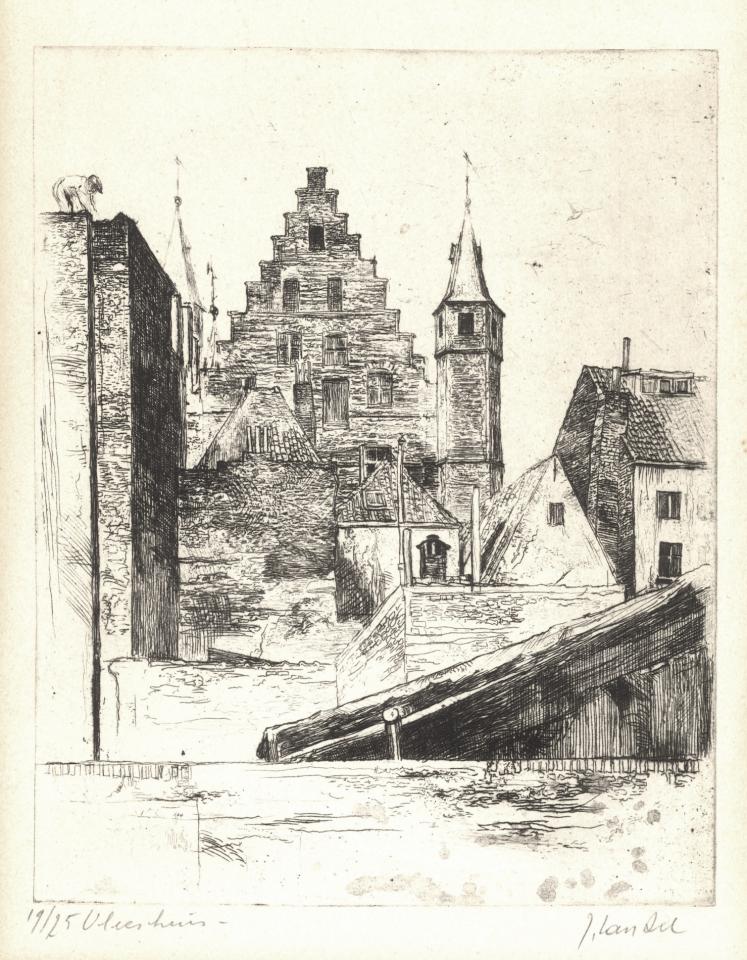 Collectie Museum Vleeshuis
Collectie Museum Vleeshuis
Afbeelding 2 - Jules van Ael, Zicht op het Vleeshuis vanuit het oosten
Collectie Museum Vleeshuis
When Napoleon abolished the guilds in 1796, the Vleeshuis was surplus to requirements. The building was available for rent. In the first half of the 19th century, several famous painters set up shop here. Nicaise De Keyser painted The Battle of the Golden Spurs here in 1836. While visiting the studio, Hendrik Conscience was inspired by the canvas. Two years later, The Lion of Flanders was a reality. At the same time, there was room for music: the theatre and opera company 'Liefde en Eendracht' (Love and Unity) also took up residence in the Vleeshuis, and organ builder Jean-Joseph Delhaye also rented a space here. The building also occasionally served as a venue for art auctions. In addition, the Vleeshuis proved to be an excellent storage place for wine. A wine merchant called Renson first rented the building; in 1841, another wine merchant called Peyrot purchased the entire property. He carried out major alteration work, dividing the high, vaulted, first floor into two floors for additional space.
1913-2006: Museum of Applied Art
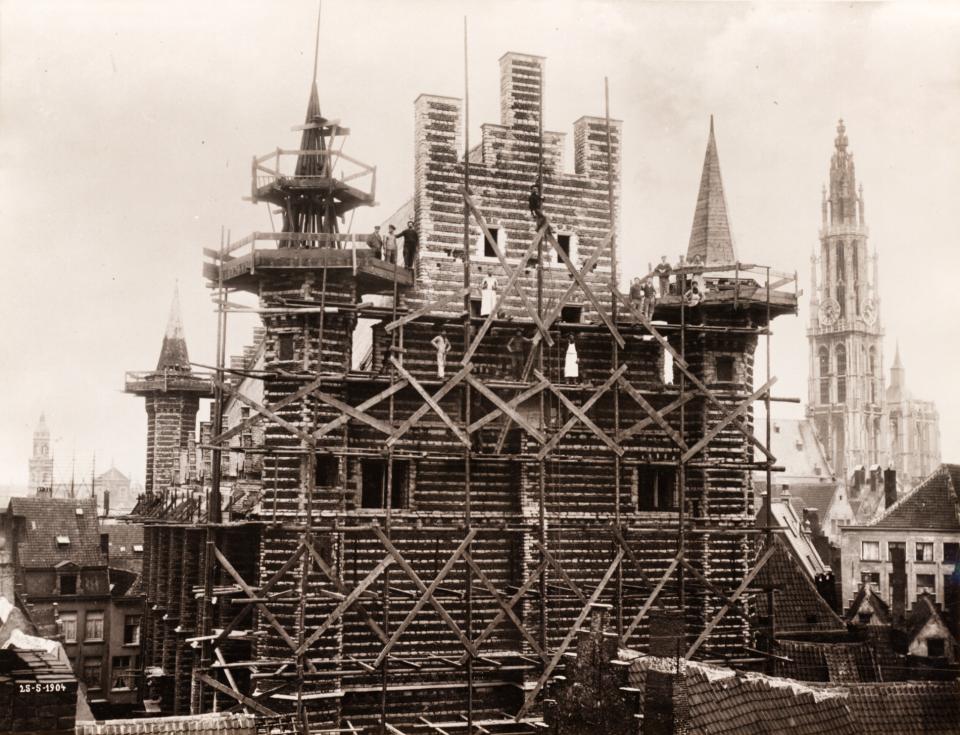 Foto van het Vleeshuis tijdens de restauratie door Alexis van Mechelen, 1904, collectie Stadsarchief Antwerpen.
Foto van het Vleeshuis tijdens de restauratie door Alexis van Mechelen, 1904, collectie Stadsarchief Antwerpen.
In 1864, Antwerp's first urban museum, the Museum of Antiquities, opened in Het Steen. Het Steen soon became too small, and a larger building was needed. In 1899, the Vleeshuis came into the hands of the city. The latter decided to comprehensively restore the building under the direction of Alexis Van Mechelen. The Museum of Applied Art opened its doors here in August 1913. As a sister museum to Het Steen, which also housed part of the Museum of Antiquities' collection. The collection was highly diverse: from armour to archaeological finds, ceramics to furniture, coins to musical instruments. In addition, visitors could also enter several reconstructed historic period rooms.
2006: The Sound of the City
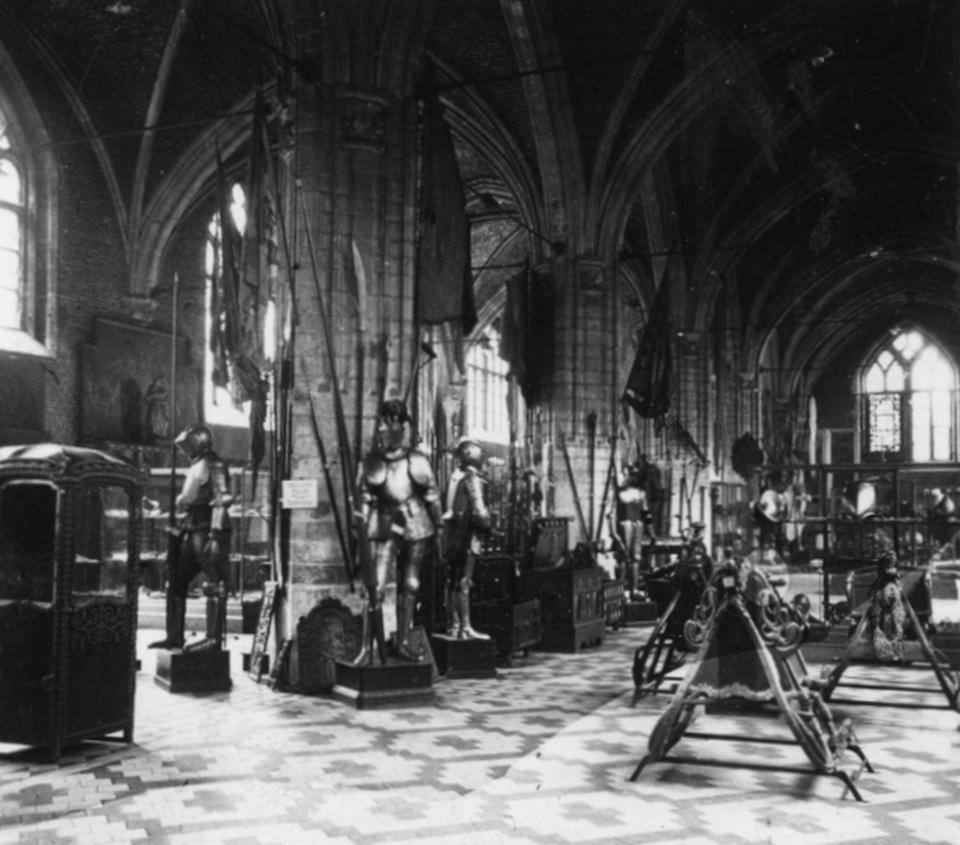
Interieur van het museum, gelijkvloers, vroege 20ste eeuw
A few Baroque harpsichords and a handful of trumpets and drums: in 1864 these instruments laid the foundation for what would subsequently grow into a world-renowned collection of musical instruments. The instruments were first on display in the Music Room of Het Steen. But it wasn't long before the rapidly growing musical instrument collection moved to Museum Vleeshuis, in 1913.
In 1967, the Royal Conservatory of Antwerp transferred its collection of historical musical instruments to Museum Vleeshuis. The collector in question was none other than composer, conductor and conservatory founder Peter Benoit. As early as 1888, Benoit advocated a long-term approach to music heritage. He hoped to set up 'a museum of instruments for contemplative and historical studies'. In 1967, the museum and the conservatory entered into a partnership that continues to this day. Heritage and education, research and artistic practice go hand in hand in a unique way. Even today, teachers from the Conservatory still teach weekly classes at the museum, and students and alumni give concerts.
Over the course of the 20th century, Museum Vleeshuis transformed into a museum of music and musical experience in Antwerp. The transformation was complete in 2006. Following a brief closure, the Vleeshuis reopened its doors under the name Museum Vleeshuis | Sound of the City.
Today

In 2022, Museum Vleeshuis was officially recognised as a museum by the Flemish Government.
Today, Museum Vleeshuis collects, preserves, researches and makes available musical instruments, stories, craftsmanship and traditions from 800 years of musical life in Antwerp and Flanders. Together with a variety of partners, the museum brings the collection to life in concerts and other activities, within the Vleeshuis and beyond, and inspires listening and viewing, music-making, composing and building. In this way, Museum Vleeshuis enriches the outlook of everyone who loves music, and passes on tangible and intangible musical heritage to future generations.


